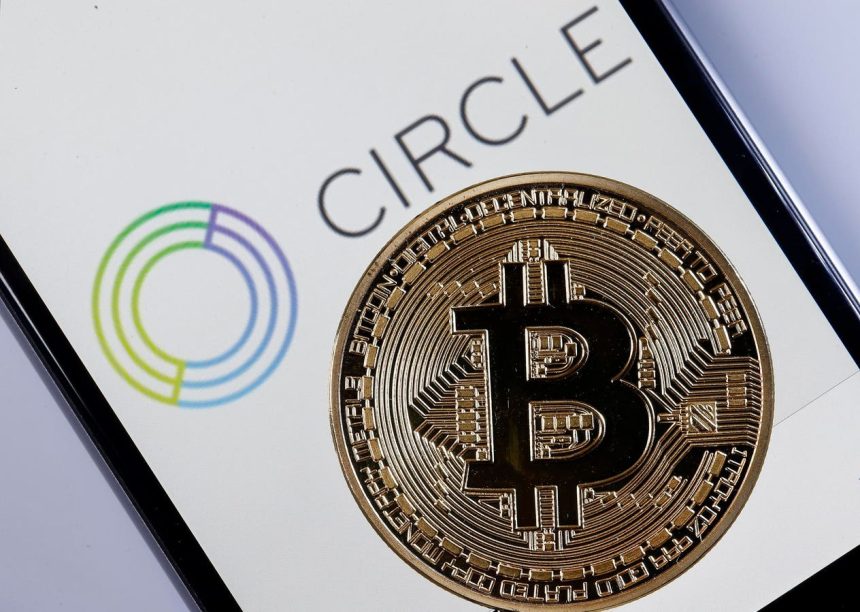Circle’s Rise in the Financial World
Circle Internet Financial Ltd, an influential player in the digital finance arena, is making waves with its innovative approach to stablecoins. Following its spectacular IPO, where its stock surged from an initial price of $35 to nearly $300 within weeks, the company has become a focal point on Wall Street. With USDC, the second-largest stablecoin globally, Circle is establishing itself as a vital connective layer between cryptocurrency and traditional finance.
The Challenge of Revenue Distribution
Despite its impressive growth, Circle faces a significant challenge: it earns less from USDC than some of its distribution partners. In 2024, Coinbase, a major player in the cryptocurrency market, reported revenues of $908 million—representing about 54 percent of Circle’s total revenue. Circle retained the remaining 46 percent, which illustrates a stark imbalance in revenue sharing. This arrangement, deemed necessary for market share acquisition, highlights the competitive landscape that Circle navigated since launching USDC in 2018.
The Importance of Stablecoins
Stablecoins have emerged as essential components in the financial ecosystem. In just the first half of 2025, they facilitated $8.5 trillion in transactions, dominating 89 percent of digital asset trades and powering nearly half the liquidity in decentralized finance (DeFi) protocols managing over $200 billion. Their efficiency reduces cross-border payment costs by up to 80 percent compared to conventional methods, making them increasingly popular in countries like Argentina, Vietnam, Turkey, and Nigeria.
USDC: Bridging Traditional and Digital Finance
Circle’s USDC is not just digital cash; it serves as a foundational layer for real-time financial settlements. With acceptance across 23 blockchains and 89 percent of major exchanges, it boasts a reach of 500 million users in over 180 countries. In 2024 alone, USDC’s circulation soared by 78 percent to $64 billion, capturing a quarter of the global stablecoin market. Since its inception, it has processed over $20 trillion in transactions and played a significant role in bridging $850 billion between crypto and traditional finance.
The Resilience of USDC
USDC has demonstrated strength in difficult times, maintaining its value during the 2021–22 crypto winter and remaining stable amidst crises such as the one triggered by Silicon Valley Bank. Jamie Dimon, CEO of JPMorgan, acknowledged stablecoins during a recent earnings call, indicating that major financial institutions are beginning to recognize their importance.
Circle’s Business Model and Future Plans
Circle’s revenue model is built on earning interest from the reserves backing USDC. With over $60 billion in tokens in circulation, Circle holds an equal amount in reserves, largely invested in a money market fund managed by BlackRock. While this model generates income, much of it is shared with partners like Coinbase, which retains all interest on USDC held on its platform. As interest rates potentially decline, Circle may find its revenue streams challenged.
Exploring New Revenue Streams
In response to revenue constraints, Circle is diversifying its income sources through transaction fees, blockchain partnerships, and new financial products. The company has also begun charging fees for transferring USDC between different blockchain networks, signaling a pivot toward monetization strategies to bolster its finances further.
Strategic Partnerships and Regulatory Advantages
Circle is actively enhancing its footprint in both digital and traditional finance. The company is exploring partnerships to develop cross-border payment solutions that eliminate costly delays and inefficiencies. Additionally, it is collaborating with the Intercontinental Exchange to test USDC’s functionality as collateral in traditional markets, potentially streamlining settlement processes.
Embracing Regulatory Changes
With the GENIUS Act introduced in July 2025, requiring strict regulations for stablecoins, Circle is ahead of the curve, having established compliance measures that competitors now face. This regulatory foresight strengthens Circle’s market position, establishing a robust framework that could ensure smoother operations amid a shifting legal landscape.
The Road Ahead for Circle
Circle is pursuing a U.S. banking license, aiming to integrate further into the traditional financial system. Gaining approval would allow it direct access to Federal Reserve payment systems, bolstering USDC’s status as a trusted digital dollar. This venture could redefine how programmable dollars function within modern finance.
Looking Forward
As Circle continues to navigate the complex landscape of digital finance, its focus on scalable, high-margin opportunities and regulatory preparedness positions it for future success. As CEO Jeremy Allaire notes, “we’re still in the very early, early days of this,” indicating that the potential of stablecoins is still expanding. Investors are not just backing a fintech initiative; they are placing bets on the future of money and the role Circle may play in it.






